Micro-hydro power systems offer you a reliable, sustainable energy solution for your off-grid homestead. By harnessing flowing water, these small-scale generators provide consistent electricity 24/7, with minimal environmental impact. They're adaptable to various water sources and can be integrated with existing power systems. With proper maintenance, micro-hydro setups can last 20-30 years, offering long-term energy independence. While initial costs and regulations can be challenging, the potential for significant energy savings makes them an attractive option for off-grid living. Exploring successful case studies and conducting a thorough cost-benefit analysis will help you determine if micro-hydro power is right for your homestead.
Defining Micro-Hydro Power Systems
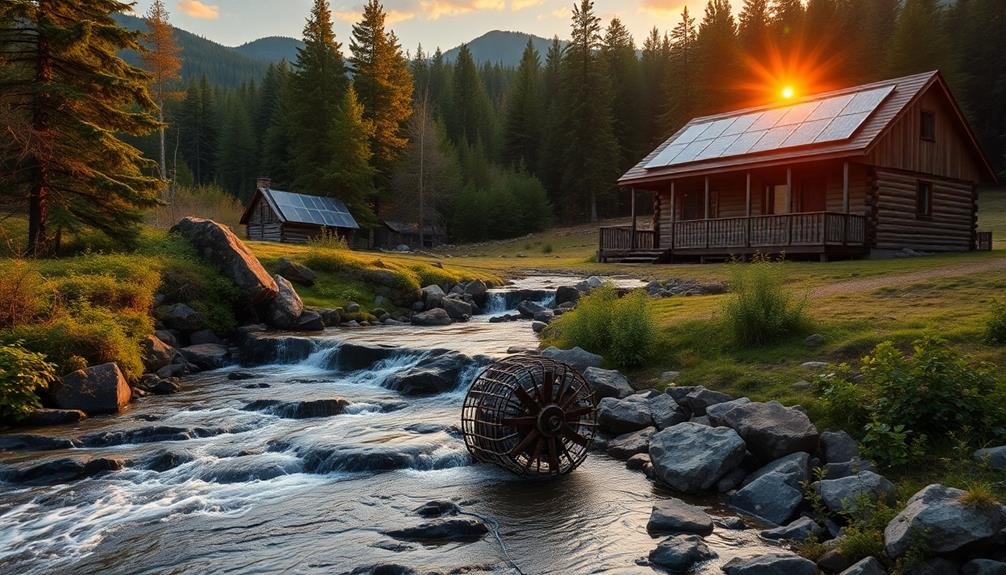
Micro-hydro power systems are small-scale hydroelectric generators that harness the energy from flowing water to produce electricity. They're typically used for off-grid applications, providing power to remote homes, farms, or small communities.
Unlike large hydroelectric dams, micro-hydro systems don't require massive infrastructure and can be installed on streams or rivers with minimal environmental impact.
You'll find that micro-hydro systems consist of several key components: a water intake, penstock, turbine, generator, and electrical control system. The water intake diverts a portion of the stream flow into the penstock, a pipe that channels water to the turbine. As water flows through the turbine, it spins, converting the water's kinetic energy into mechanical energy. The generator then transforms this mechanical energy into electrical energy.
Micro-hydro systems are classified based on their power output, typically ranging from 5 to 100 kilowatts. They're regarded as a reliable and consistent source of renewable energy, as they can operate 24/7 as long as there's sufficient water flow.
You'll need to take into account factors like water flow rate, head (vertical drop), and site conditions when determining if a micro-hydro system is suitable for your off-grid homestead.
Water Flow Requirements
To harness micro-hydro power effectively, you'll need to assess your water source's flow requirements.
Start by determining the minimum flow rate necessary for your system, and consider how seasonal variations might impact your power generation.
You'll also need to calculate the head (vertical drop) and volume of water available, as these factors directly influence the potential energy output of your micro-hydro setup.
Minimum Flow Rate
When considering a micro-hydro system for your off-grid homestead, understanding the minimum flow rate is essential. This measurement represents the lowest amount of water flow needed to generate usable power.
You'll need to determine if your water source can consistently provide this minimum flow, even during dry seasons.
The minimum flow rate varies depending on your power requirements and system efficiency. Generally, it's measured in gallons per minute (GPM) or liters per second (L/s).
To calculate your minimum flow rate, you'll need to:
- Assess your daily power consumption
- Factor in system losses and inefficiencies
- Consider seasonal variations in water flow
- Account for future power needs
Seasonal Flow Variations
Understanding seasonal flow variations is key to designing a reliable micro-hydro system for your off-grid homestead. Water flow in streams and rivers typically fluctuates throughout the year due to changes in precipitation, snowmelt, and evaporation rates. You'll need to account for these variations to guarantee your system can produce power year-round.
Start by collecting flow data for at least a full year, ideally longer. Use this information to determine your stream's minimum, maximum, and average flow rates. Design your system based on the lowest expected flow to assure consistent power generation.
However, don't overlook the potential for high flows, which can damage your equipment if not properly managed. Consider installing a flow control system to protect your turbine during periods of excessive water flow.
You might also want to incorporate energy storage solutions, such as batteries, to compensate for times when water flow is insufficient. By understanding and planning for seasonal flow variations, you'll be able to create a more resilient and efficient micro-hydro system that meets your homestead's energy needs throughout the year.
Head and Volume Calculations
After determining your stream's flow variations, it's time to calculate the head and volume requirements for your micro-hydro system.
Head refers to the vertical drop of water from the intake to the turbine, while volume is the amount of water flowing through the system. These two factors are essential in determining the potential power output of your micro-hydro installation.
To calculate head, you'll need to measure the elevation difference between your water source and the turbine location. Use a topographic map, GPS device, or professional surveying equipment for accurate measurements.
For volume, you'll need to measure the flow rate of your stream, typically in gallons per minute or liters per second.
When evaluating your site's potential, keep these key points in mind:
- Higher head generally yields more power than higher volume
- A combination of both head and volume produces the best results
- Seasonal variations can greatly impact available volume
- Proper pipe sizing is critical for maximizing efficiency
Once you've calculated your head and volume, you can estimate your system's potential power output using the formula: Power (watts) = Head (feet) x Flow (GPM) x 0.18.
This information will help you select the appropriate turbine and determine if your site is suitable for micro-hydro power generation.
Turbine Types for Homesteads
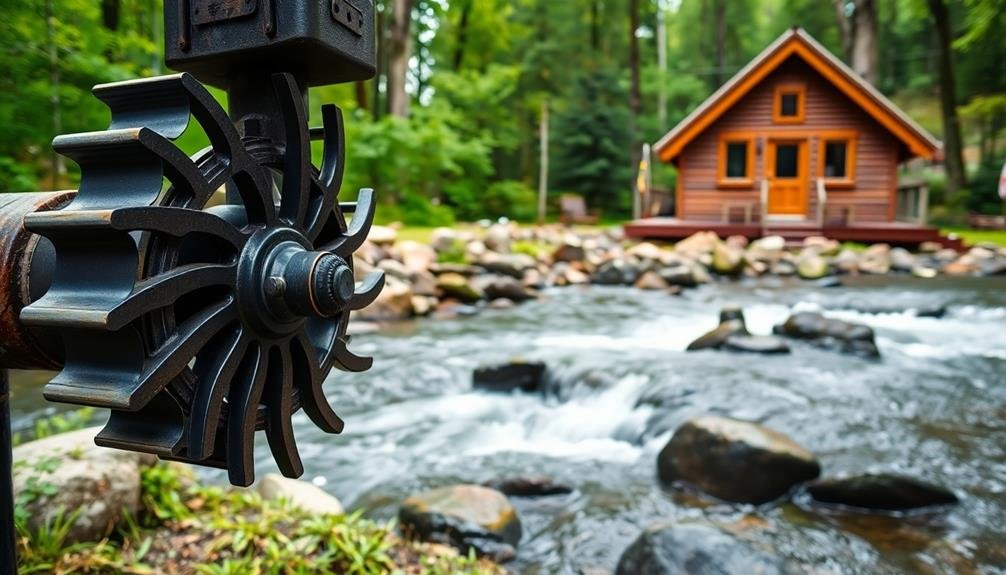
For micro-hydro power systems on homesteads, choosing the right turbine is essential to maximize energy production.
You'll typically encounter two main types: impulse and reaction turbines. Impulse turbines, like the Pelton wheel, are ideal for high-head, low-flow situations. They're efficient and can handle debris well, making them suitable for mountain streams. The Turgo turbine, another impulse type, works best with medium to high heads and can handle higher flow rates than Pelton wheels.
Reaction turbines, such as Francis or propeller types, are better suited for low-head, high-flow conditions. They're often found in larger rivers or streams with gentler gradients. The crossflow turbine, a hybrid design, works well in a wide range of head and flow conditions, making it versatile for homestead applications.
When selecting a turbine, consider your site's specific head and flow characteristics. You'll also want to factor in maintenance requirements, efficiency at varying flow rates, and cost.
Don't forget to account for seasonal variations in water flow, as this will impact your turbine's performance throughout the year. Consult with a micro-hydro specialist to ascertain you choose the most appropriate turbine for your homestead's unique conditions.
Installation Process and Costs
When installing a micro-hydro system, you'll need to prepare your site and gather essential equipment like turbines, generators, and piping.
You'll incur costs for these components, as well as expenses for labor if you're not doing the installation yourself.
Don't forget to factor in permit fees, which can vary depending on your location and the scope of your project.
Equipment and Site Preparation
Diving into the installation process, you'll find that setting up a micro-hydro system requires careful planning and specific equipment. You'll need to assess your site's potential, taking into account factors like water flow, head height, and distance from the power source to your home. Essential components include a water intake, penstock pipe, turbine, generator, and control system.
Site preparation is vital for peak performance. You'll need to:
- Clear the area around the water source
- Install a dam or weir to create a consistent water flow
- Build a settling tank to remove debris
- Construct a powerhouse to protect the equipment
When selecting equipment, prioritize durability and efficiency. Choose a turbine that matches your site's characteristics, such as Pelton wheels for high head sites or crossflow turbines for lower heads.
Don't forget to account for seasonal water variations when sizing your system.
You'll also need to evaluate power transmission. If your generator is far from your home, you may need to install power lines or a battery bank. Proper grounding and lightning protection are essential for safety and longevity.
Labor and Permit Expenses
The installation process of a micro-hydro system brings with it a range of labor and permit expenses you'll need to contemplate. You'll likely require professional help for site assessment, system design, and installation. These services can cost anywhere from $2,000 to $10,000, depending on your location and project complexity.
Permit fees vary widely by jurisdiction. You may need water rights permits, construction permits, and environmental impact assessments. Budget $500 to $3,000 for these regulatory requirements.
Here's a breakdown of potential labor and permit expenses:
| Expense Type | Low End | Average | High End |
|---|---|---|---|
| Site Assessment | $500 | $1,500 | $3,000 |
| System Design | $1,000 | $2,500 | $5,000 |
| Installation | $500 | $2,000 | $5,000 |
| Water Rights Permit | $100 | $500 | $1,500 |
| Construction Permit | $200 | $750 | $2,000 |
Energy Output Potential
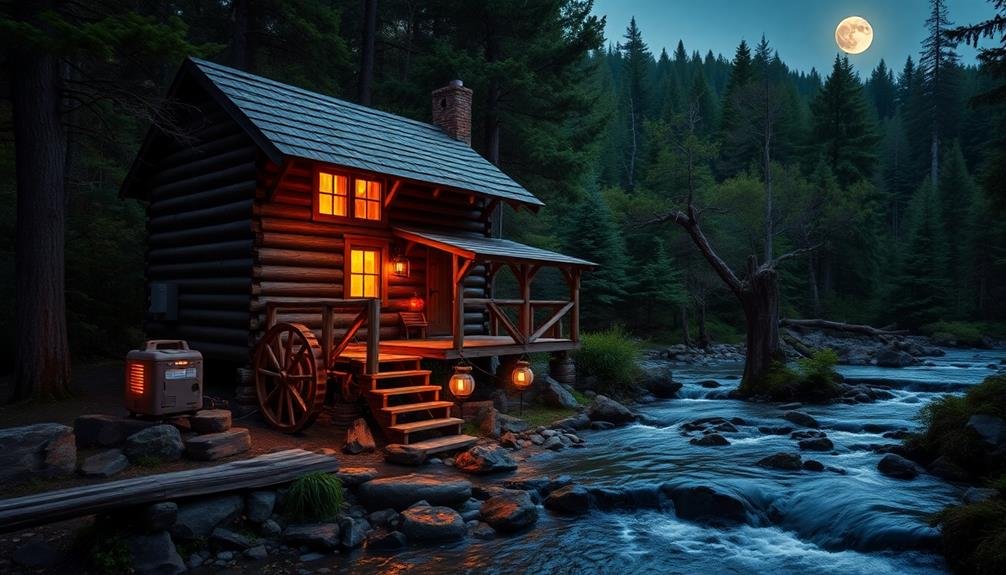
Several factors determine the energy output potential of a micro-hydro system for your off-grid homestead. The most essential elements are the water flow rate and the available head (vertical drop) of your water source.
These two factors combine to determine the system's power generation capacity.
To calculate your potential energy output, you'll need to measure the flow rate in gallons per minute and the head in feet. Multiply these values together and divide by a constant (typically around 10-13, depending on system efficiency) to estimate your power output in watts.
When evaluating your energy output potential, consider:
- Seasonal variations in water flow
- Minimum flow rates during dry periods
- Maximum head available on your property
- Efficiency of your chosen turbine and generator
Environmental Impact Considerations
When considering micro-hydro power for your off-grid homestead, you'll find it offers several environmental benefits.
You can expect minimal disruption to local ecosystems, as these systems typically use existing water flows without the need for large dams or reservoirs.
Minimal Ecosystem Disruption
Micro-hydro power systems, when properly designed and implemented, can have minimal impact on local ecosystems.
You'll find that these systems often work with nature rather than against it. By diverting only a portion of the stream's flow, you're allowing the majority of water to continue its natural course, preserving the habitat for aquatic life.
When installing a micro-hydro system, you'll want to contemplate the following to minimize ecosystem disruption:
- Use fish-friendly intake screens to prevent harm to aquatic life
- Implement erosion control measures during construction
- Choose environmentally friendly lubricants for turbine components
- Design the system to maintain minimum flow rates for aquatic habitats
You'll also appreciate that micro-hydro systems don't create reservoirs or large dams, which can greatly alter landscapes and disrupt wildlife.
Instead, they typically use run-of-river designs that work with existing water flows. This approach helps maintain natural sediment transport processes and doesn't impede fish migration.
Reduced Carbon Emissions
Consistently, micro-hydro power systems offer considerable environmental benefits through reduced carbon emissions. By harnessing the natural flow of water, you're generating clean, renewable energy without burning fossil fuels. This means you're not releasing harmful greenhouse gases into the atmosphere, contributing to a cleaner environment and helping combat climate change.
When you compare micro-hydro to traditional energy sources, the difference in carbon emissions is striking:
| Energy Source | CO2 Emissions (g/kWh) | Renewable | Continuous Power |
|---|---|---|---|
| Micro-Hydro | 4-5 | Yes | Yes |
| Coal | 820-1000 | No | Yes |
| Natural Gas | 490 | No | Yes |
| Solar PV | 40-50 | Yes | No |
As you can see, micro-hydro power produces considerably fewer emissions than fossil fuel alternatives. It's even cleaner than solar PV, which requires energy-intensive manufacturing processes. By choosing micro-hydro for your off-grid homestead, you're making a substantial contribution to reducing your carbon footprint. You're also setting an example for sustainable living, showing that it's possible to meet energy needs without compromising the environment.
Water Resource Preservation
While micro-hydro power offers significant benefits in reducing carbon emissions, it's important to contemplate its impact on local water resources. As an off-grid homesteader, you'll need to carefully assess your system's effect on the surrounding ecosystem.
Micro-hydro installations typically divert only a portion of a stream's flow, allowing most of the water to continue its natural course. This approach helps preserve aquatic habitats and maintains downstream water availability.
When designing your micro-hydro system, consider the following water preservation strategies:
- Install fish-friendly intake screens to prevent harm to aquatic life
- Implement a minimum flow requirement to guarantee ecological balance
- Use non-toxic lubricants in turbines to avoid water contamination
- Regularly monitor water quality and flow rates
Maintenance and Longevity
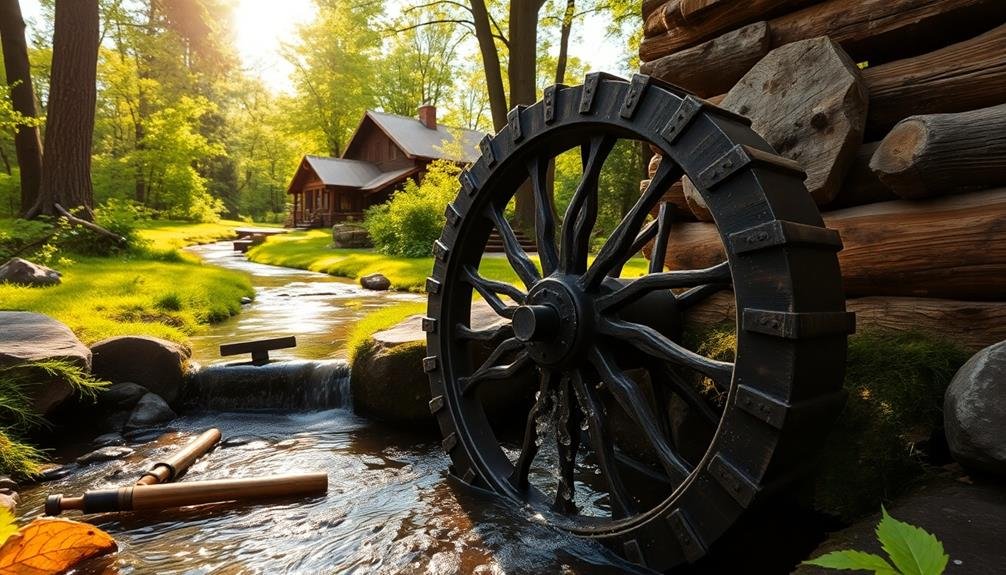
A micro-hydro system's longevity hinges on proper maintenance. You'll need to regularly inspect and clean the intake screen to prevent debris from clogging the system.
Check the penstock for leaks or damage, and verify the turbine blades are free from sediment buildup. Monitor the generator's bearings and lubricate them as needed to prevent wear and tear.
You should conduct a thorough system check at least twice a year, ideally before and after peak flow seasons. Keep an eye on water levels and adjust the flow control accordingly to maintain peak efficiency.
Don't forget to inspect electrical components for signs of corrosion or damage, and replace any worn-out parts promptly.
With proper care, your micro-hydro system can last 20-30 years or more. The turbine and generator typically have the longest lifespan, while other components like bearings and seals may need replacement every 5-10 years.
Integrating With Existing Power Systems
Integrating a micro-hydro system with your existing power setup can greatly enhance your off-grid energy independence. You'll need to carefully plan how the new system will work alongside your current power sources, whether they're solar panels, wind turbines, or generators.
Consider using a hybrid inverter that can manage multiple power inputs, allowing seamless switching between sources based on availability and demand.
To guarantee a smooth integration, you'll want to:
- Assess your current power consumption and future needs
- Calculate the potential output of your micro-hydro system
- Determine the best way to store excess energy
- Install appropriate safety measures and monitoring systems
Don't forget to update your battery bank if necessary, as micro-hydro can provide consistent power that may exceed your current storage capacity.
You might also need to upgrade your wiring and distribution panel to handle the additional input.
Remember, proper integration will maximize efficiency and reduce waste, allowing you to make the most of your natural water resources.
Regulations and Permitting
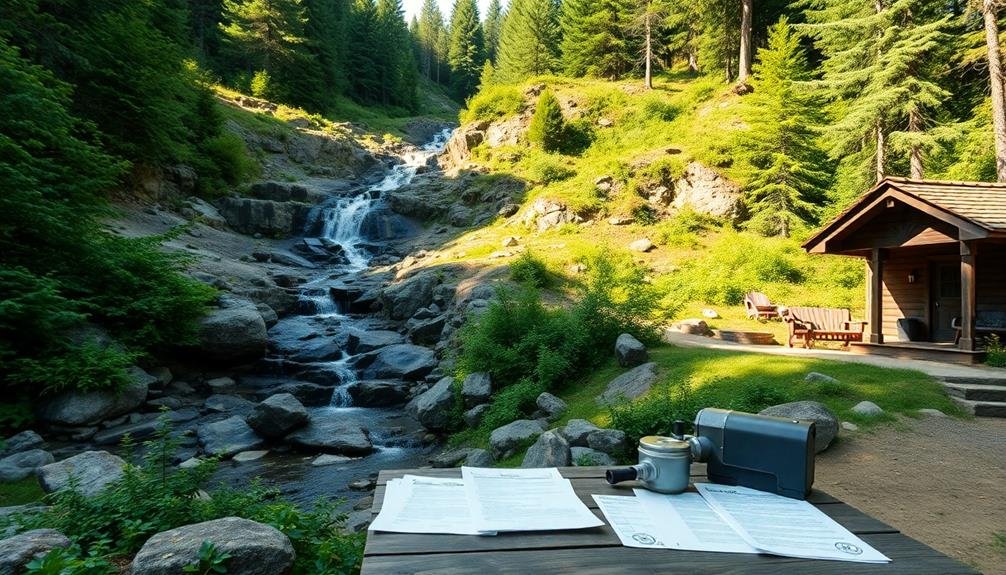
Steering through regulations and permitting for micro-hydro power can be a complex process. You'll need to navigate federal, state, and local requirements, which vary depending on your location and the scale of your project.
Start by contacting your local water resource department to understand water rights and usage restrictions in your area.
For most micro-hydro installations, you'll need to obtain a water right permit, which grants you permission to use the water for power generation. You may also require environmental impact assessments, especially if your project affects fish habitats or water quality.
Don't forget to check with your local planning department for zoning regulations and building permits.
If your micro-hydro system will connect to the grid, you'll need to comply with utility interconnection requirements. These often involve safety standards and equipment specifications.
Some states offer expedited permitting processes for small-scale renewable energy projects, so research if this applies to you.
While the permitting process can be intimidating, it's essential for ensuring your project is legal and environmentally responsible.
Consider hiring a consultant familiar with local regulations to guide you through the process and increase your chances of approval.
Seasonal Variations in Performance
Understanding seasonal variations is vital for maximizing your micro-hydro system's performance. Water flow in streams and rivers fluctuates throughout the year, impacting your power generation.
During spring runoff, you'll likely experience peak output as melting snow increases water volume. Conversely, late summer and early fall often bring lower water levels, reducing your system's efficiency.
To adapt to these changes, you'll need to adjust your turbine's intake and nozzle size. In high-flow seasons, you can increase the nozzle diameter to capture more power. During drier periods, reduce the nozzle size to maintain ideal pressure.
It's essential to monitor your system regularly and make these adjustments as needed.
Consider these factors when planning for seasonal variations:
- Historical water flow data for your stream
- Local precipitation patterns
- Snowpack levels in your watershed
- Potential impacts of climate change on water availability
Cost-Benefit Analysis for Homesteaders
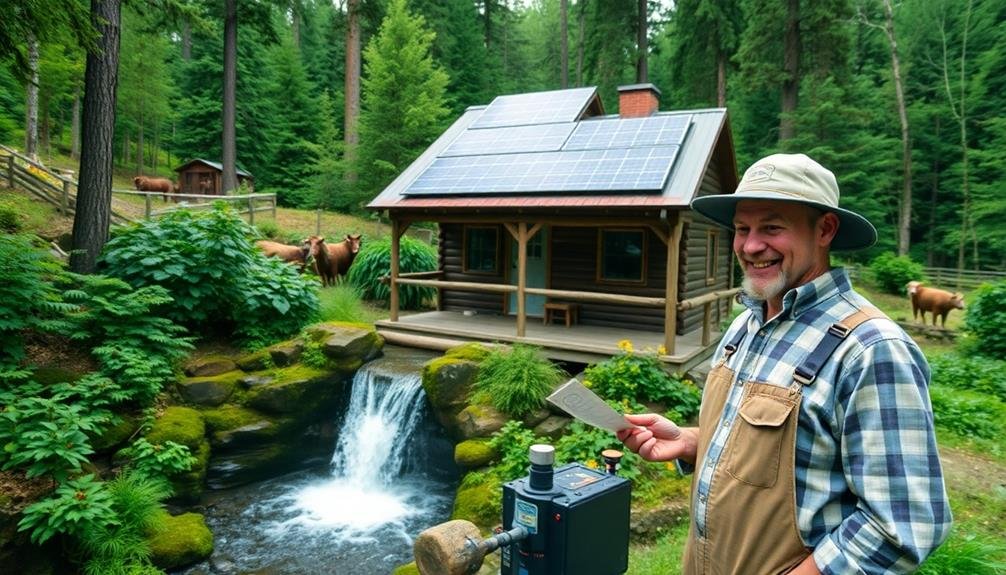
For homesteaders considering micro-hydro power, a thorough cost-benefit analysis is essential. You'll need to weigh the initial investment against long-term savings and benefits. Start by evaluating your property's water resources and potential energy output. Calculate the upfront costs, including equipment, installation, and any necessary permits.
Next, estimate your annual energy savings and compare them to your current energy expenses. Don't forget to factor in maintenance costs and the system's lifespan. Consider the following table for a quick overview:
| Factor | Benefit | Cost |
|---|---|---|
| Initial Investment | – | $10,000-$50,000 |
| Annual Energy Savings | $1,000-$3,000 | – |
| Maintenance | – | $200-$500/year |
| Lifespan | 20-30 years | – |
Beyond financial considerations, evaluate the environmental impact and increased energy independence. You'll reduce your carbon footprint and gain resilience against grid outages. Additionally, some areas offer tax incentives or grants for renewable energy installations, further improving the cost-benefit ratio. By carefully analyzing these factors, you'll determine if micro-hydro power is the right choice for your homestead.
Case Studies of Successful Implementations
Let's explore some real-world examples of successful micro-hydro power implementations on homesteads. You'll find that these case studies showcase the versatility and effectiveness of micro-hydro systems in various settings.
In Colorado, a family installed a 1.5 kW system on their mountain property, harnessing a small stream with a 100-foot drop. They now enjoy year-round electricity, powering their home and workshop.
In Oregon, a couple implemented a 3 kW system on their 20-acre homestead, using a nearby creek to generate enough power for their home, greenhouse, and small dairy operation.
A more ambitious project in British Columbia saw a community of off-grid homes collaborating to install a 10 kW system, sharing the costs and benefits among multiple households.
In New Zealand, a sheep farmer integrated a 5 kW micro-hydro system with solar panels, creating a hybrid setup that guarantees consistent power throughout the year.
These successful implementations demonstrate:
- Adaptability to different water sources and terrain
- Scalability from single homes to small communities
- Potential for integration with other renewable energy sources
- Long-term reliability and low maintenance requirements
Frequently Asked Questions
Can Micro-Hydro Systems Be Used in Areas With Intermittent Water Flow?
Yes, you can use micro-hydro systems in areas with intermittent water flow. You'll need to incorporate storage solutions like batteries or a water reservoir to guarantee continuous power supply during dry periods. It's vital to assess your site's water availability carefully.
How Do Micro-Hydro Systems Compare to Solar Panels in Cloudy Regions?
In cloudy regions, you'll find micro-hydro systems more reliable than solar panels. They'll generate consistent power as long as there's water flow, while solar panels' efficiency drops considerably in overcast conditions. You won't depend on sunny days.
Are There Portable Micro-Hydro Systems for Temporary or Mobile Off-Grid Living?
Yes, you'll find portable micro-hydro systems for temporary or mobile off-grid living. They're compact, lightweight, and easy to set up. You can use them in streams or rivers to generate power for your temporary camp or mobile home.
Can Fish Safely Pass Through Micro-Hydro Turbines Without Harm?
You'll find that most micro-hydro turbines aren't fish-friendly. They can harm or kill fish passing through. However, some systems now use fish-safe designs or screens to protect aquatic life. Always check local regulations before installation.
What Happens to Excess Energy Produced by Micro-Hydro Systems?
You'll typically store excess energy from your micro-hydro system in batteries for later use. If batteries are full, you can divert power to heating elements or dump loads. Some systems even allow you to sell surplus electricity back to the grid.
In Summary
You've seen how micro-hydro power can be a game-changer for off-grid living. It's reliable, eco-friendly, and potentially cost-effective in the long run. While it requires careful planning and may face regulatory hurdles, the energy independence it offers is unmatched. As you consider your homestead's power needs, don't overlook this sustainable option. With the right water source and setup, you'll be harnessing nature's power to energize your off-grid dreams.
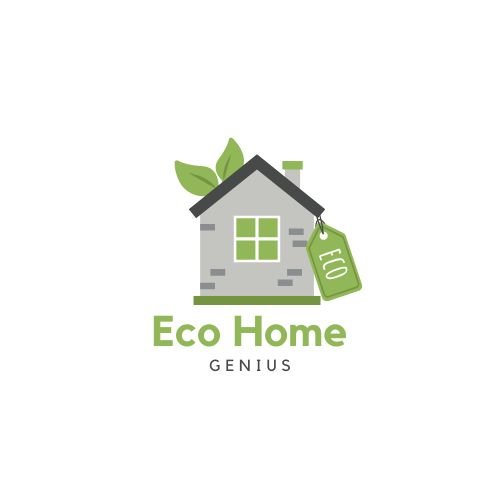
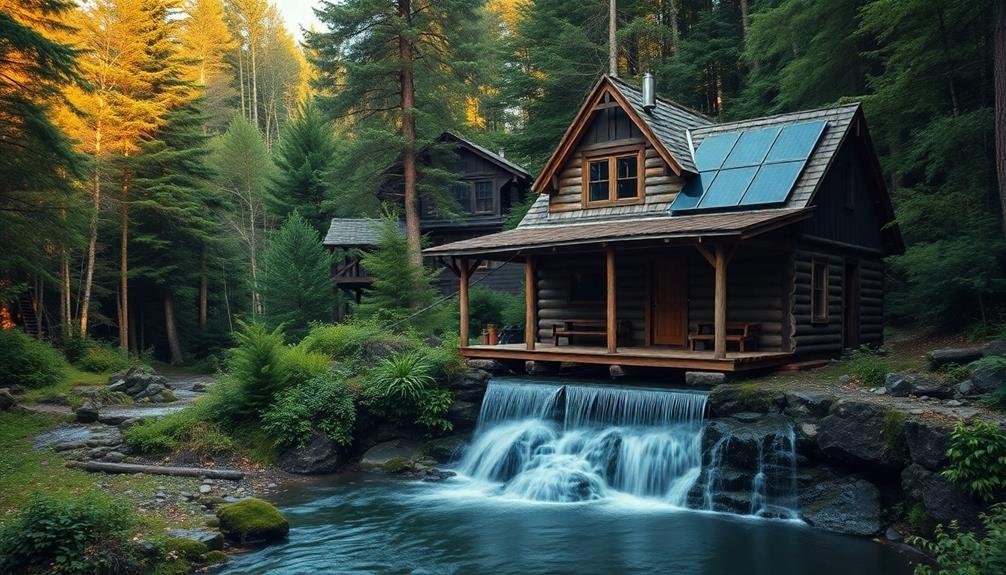
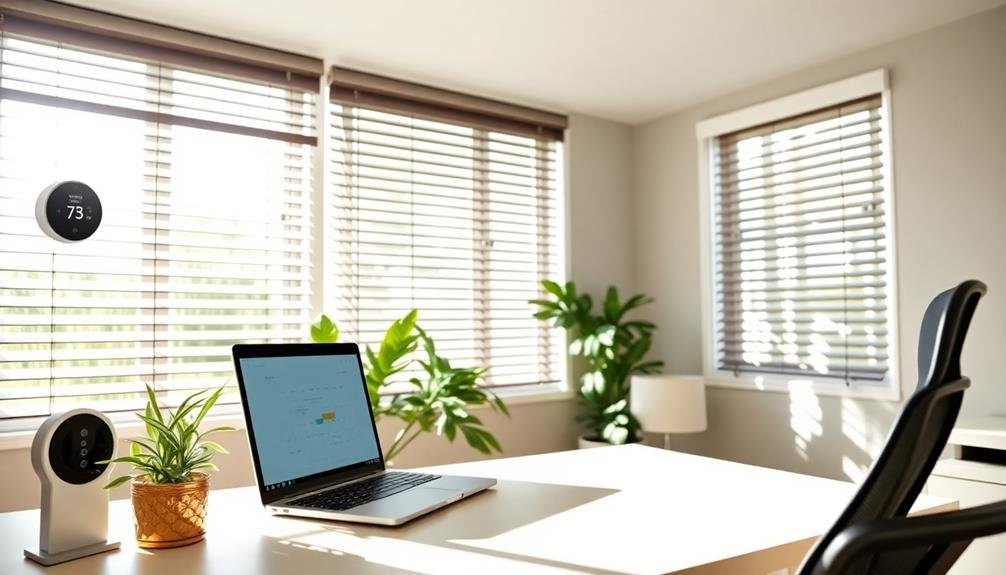
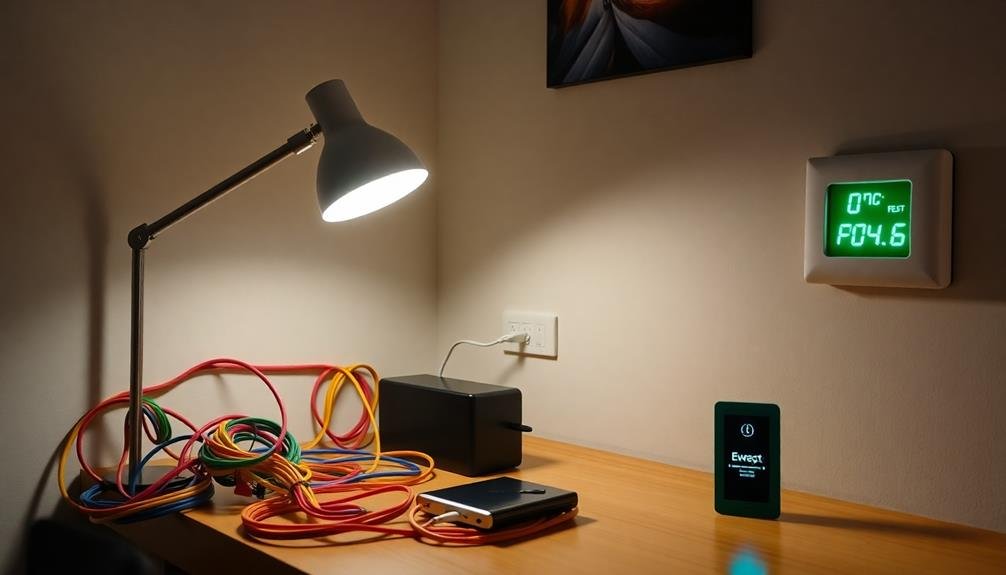
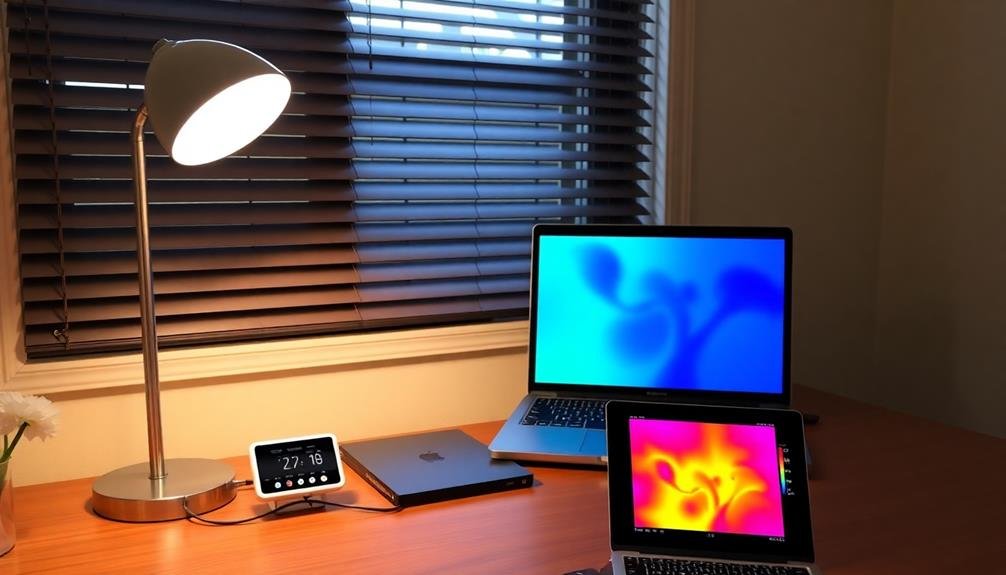
Leave a Reply